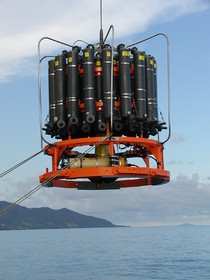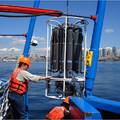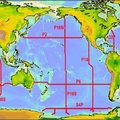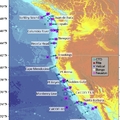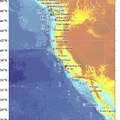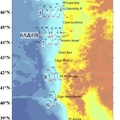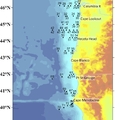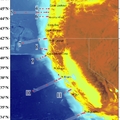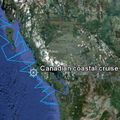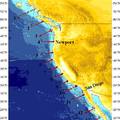Large-scale Coastal Sections
Characterizing carbon cycle spatial variability along the North American coasts
The continental margins are the primary zone where open ocean, atmospheric, and terrestrial carbon cycles interact, and as such, the large carbon fluxes occurring within or passing through the coastal oceans are of great importance for accurately quantifying the carbon budgets of the bordering open ocean, atmospheric, and terrestrial regions. Air-sea carbon fluxes along the Pacific, Atlantic, and Gulf coasts of North America are so poorly under-sampled that uncertainty remains whether these regions are net sources or sinks for CO2. The only published coastal CO2 synthesis for North America, undertaken for the First State of the Carbon Cycle Report, suggests that North American coastal oceans collectively act as a weak source of 19 ± 22 Tg C yr-1 CO2 to the atmosphere, with the total being the sum of strong CO2 sources at low latitudes on the Pacific and Atlantic coasts and in the Gulf (= 14 ± 9 Tg C yr-1 alone), balanced by strong CO2 sinks in mid to high latitude Pacific and Atlantic continental margins. However, the extreme paucity of observations in regions contributing large magnitude CO2 fluxes to this integrated, continent-scale annual flux estimate underlined the uncertainty of these results.
The PMEL carbon group is working with a number of academic and government partners to conduct large-scale coastal surveys of pCO2 and related water column chemical and hydrographic measurements to determine the spatial scales of CO2 sources and sinks, and causes thereof, along the East, Gulf, and West Coasts of North America. We also hope to gain better insight into the infrastructure required to properly develop a long-term monitoring program for the North American Carbon Program (NACP) and for the purpose of designing future process and time-series studies.

